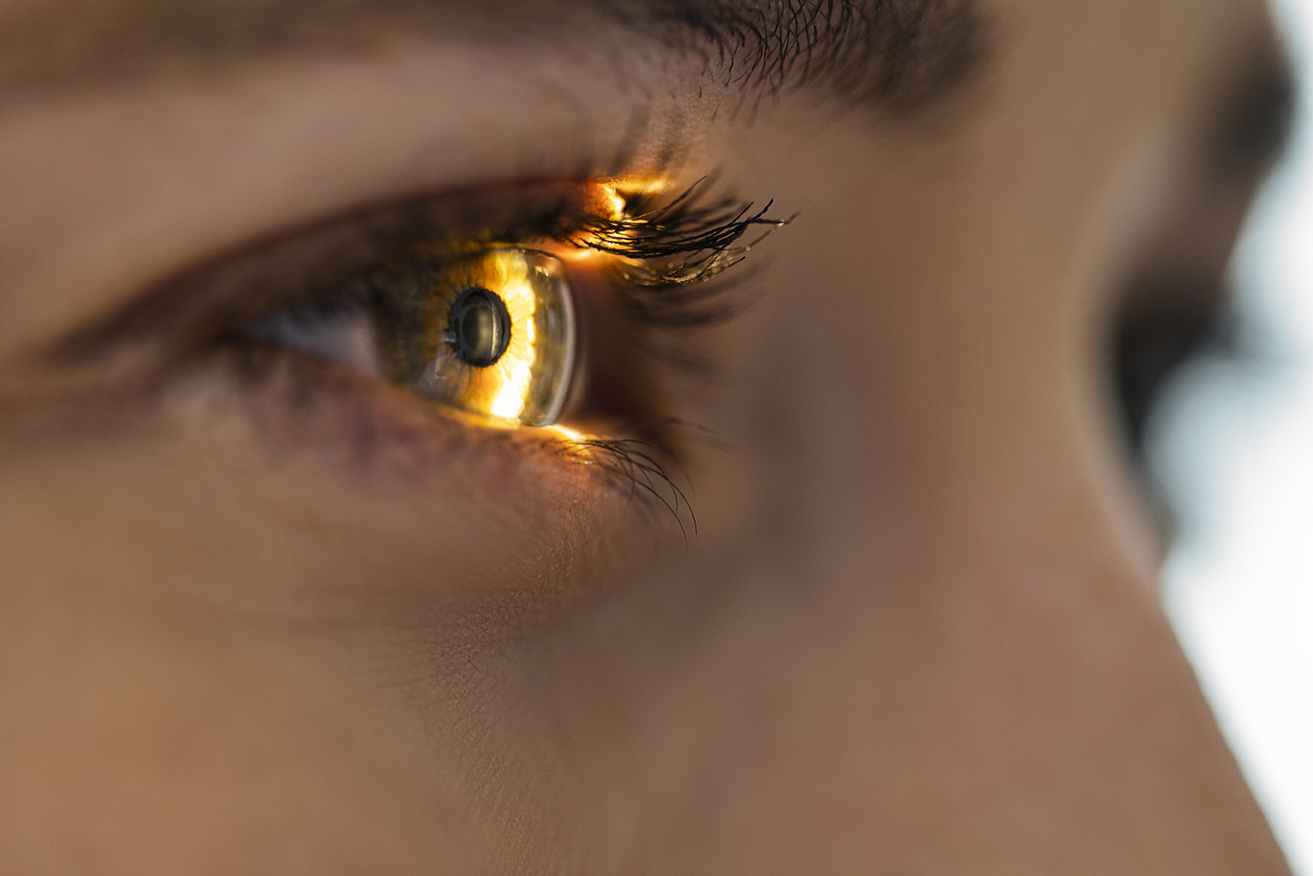
Having type 1 diabetes (T1D) can increase your risk for additional health problems, particularly if your blood sugar isn’t well-managed. The longer you have T1D, the higher your risk becomes for developing complications. For people living with T1D, eye disease is a troubling reality. Over 40% of people with T1D develop diabetic eye disease, sometimes resulting in blindness.
Fortunately, Breakthrough T1D-funded research advances, including tools like continuous glucose monitors and automated insulin delivery systems, are helping to reduce the risk of complications caused by prolonged high blood sugar.
What is diabetic eye disease?
There are two main types of diabetic eye disease: diabetic retinopathy and diabetic macular edema.
Diabetic retinopathy is one of the most common complications of T1D. It is a progressive condition, often the result of chronic high blood-sugar levels, which can damage the blood vessels in the retina of the eye and eventually cause excess, abnormal blood vessel growth. In advanced stages, contracting scar tissue may cause the retina to detach, which can lead to permanent vision loss.
Diabetic macular edema is a common—but not the only—consequence of diabetic retinopathy. It is caused by a buildup of fluid which causes the macula (the center of your retina that helps you see color and fine details) to swell and thicken, negatively affecting vision.
Learn more about the causes of diabetic eye disease.
How to reduce your risk of eye disease
Careful health monitoring can help reduce your risk of developing diabetic eye disease. This includes:

Keep your blood-sugar in range

Schedule annual eye exams with a retinal specialist

Manage blood pressure and cholesterol

Consult your doctor about early treatment options for preventive measures
Treating diabetic eye disease
Many effective therapies for diabetic eye disease are now available, many of which were made possible through Breakthrough T1D-funded research, including anti-VEGF therapy.
Vascular endothelial growth factor (VEGF) is a protein that promotes the growth of new blood vessels. In people with diabetic retinopathy, VEGF becomes overactive, and the new, fragile blood vessels can rupture and leak fluid. Breakthrough T1D played a critical part in clinical studies that led to the approval of two therapies—Lucentis® (ranibizumab) and Eylea® (aflibercept)—that inhibit VEGF and allow healthy regrowth of damaged blood vessels in the eyes.
Most recently, in February 2025, the FDA approved Susvimo®, now an alternative treatment option with fewer eye injections compared to the standard of care, to treat diabetic macular edema and help maintain vision.
Learn about other treatments for eye disease.
Funded research in eye disease and type 1 diabetes
Since the 1970s, Breakthrough T1D has funded research in the treatment and prevention of diabetic eye disease. We continue to strategically invest in therapies that have short- and long-term impacts on the lives of people with type 1 diabetes, including:
- Randomized Clinical Trial Evaluating Fenofibrate for Prevention of Diabetic Retinopathy Worsening
Fenofibrate is a safe, generic lipid-lowering medication that is being repurposed for T1D. This trial will determine if treatment with fenofibrate is effective at preventing diabetic retinopathy from worsening in individuals with mild to moderately severe early-to mid-stage retinopathy. This study will also give information on whether variation in blood sugar control is a risk factor for future worsening of diabetic eye disease.
- A Phase 2 Study Evaluating Short-Term Efficacy of Tonabersat (Xiflam) for Diabetic Macular Edema
This study will evaluate if treatment with tonabersat (Xiflam) has a short-term effect on central retinal thickness in eyes with good vision and diabetic macular edema or abnormal swelling of the central retina.
We are also supporting additional research to find new ways to prevent the development of diabetic eye disease, stop its progression, and restore lost vision through the Mary Tyler Moore Vision Initiative.
Breakthrough T1D will continue to address the complications of type 1 diabetes, including eye disease, to improve health outcomes for the entire T1D community.